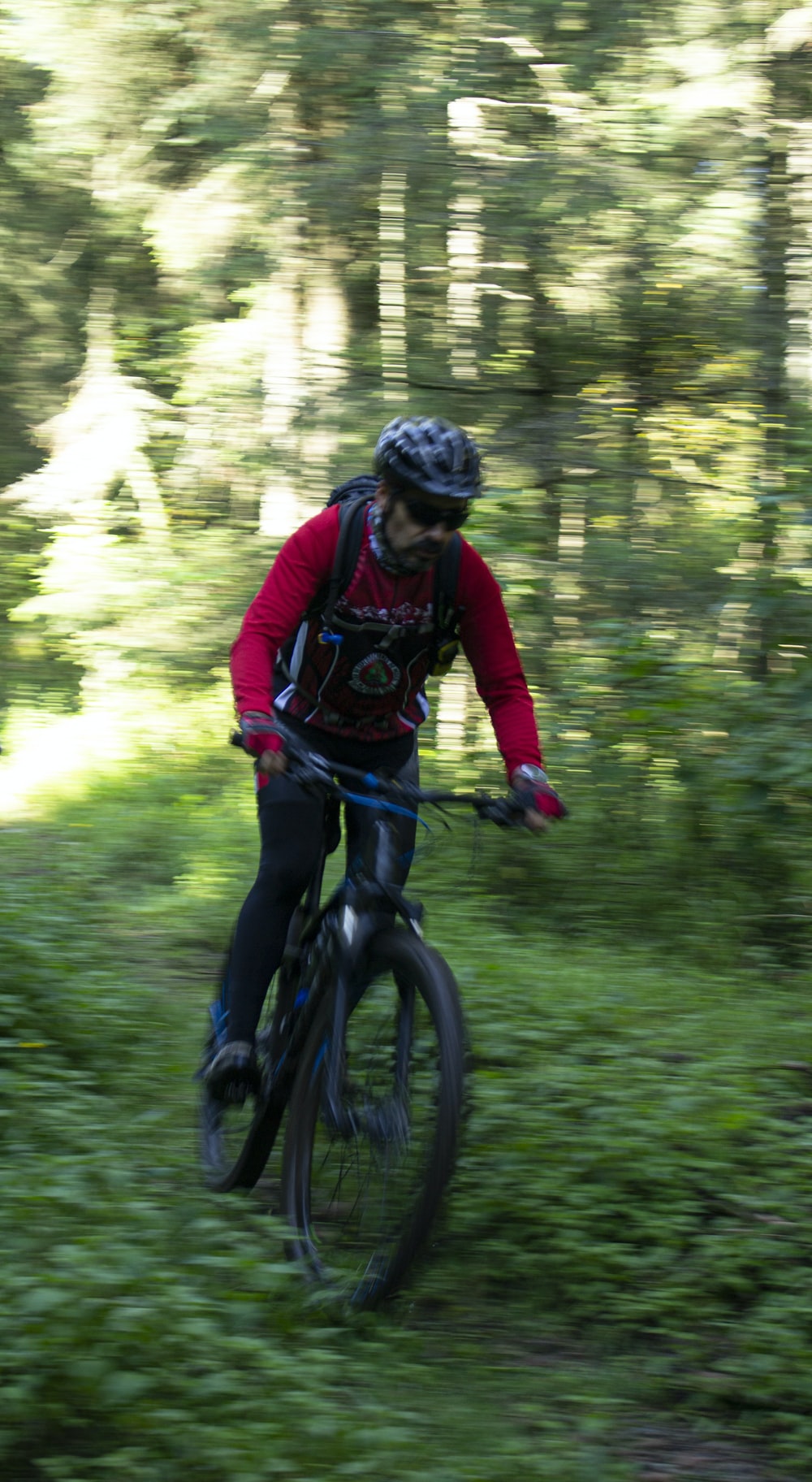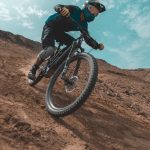For mountain bikers, one of the most common debates is whether a full suspension or hardtail bike is the best choice. While full suspension bikes provide more comfort and control in rough terrain, hardtails have their own advantages. Hardtails can provide a more efficient and responsive riding experience on many trails. They also tend to be lighter weight and more affordable than full suspension models. For these reasons, hardtail mountain bikes can often be the better choice for a majority of mountain bike riders.
Hardtails Are More Efficient Pedaling Uphill and Accelerating
With no rear shock to absorb pedaling energy, hardtail mountain bikes are much more efficient at transferring power into forward momentum. The suspension system of a full suspension bike causes some pedaling energy loss due to the compression of the rear shock. This can make hardtails faster accelerating and climbing on most trails. The exception would be extremely rough uphill sections where a rear suspension can provide improved traction. But for smooth or moderately bumpy hills, a nimble hardtail will typically climb better and allow you to carry more momentum into flatter or downhill trail sections.
Responsiveness and Handling Are Improved on a Hardtail
The rigid rear frame triangle of a hardtail mountain bike also provides a more responsive feel while riding over variable terrain. There is no slight delay between when the rear wheel contacts an obstacle and when the suspension reacts to it. This direct feeling allows for more precise steering, braking, and weight shifting inputs. Quickly dodging rocks or roots feels more instinctive with the feedback transmitted directly from the rear wheel up through the frame. And the simplicity of the hardtail frame often translates to snappier handling around corners or in tight spaces with less unneeded suspension movement affecting the bike’s composure. Altogether, these factors lead to an increased sense of control for many hardtail riders.
Lighter Overall Weight Benefits Handling and Climbing
With fewer components in the frame design, hardtails are generally lighter weight than full suspension options at the same price point. This lower overall heft directly leads to noticeable performance advantages. Acceleration and climbing feel even livelier when there is less bike to get moving. And the reduced mass makes it easier to loft the front wheel over obstacles, to quickly change direction, and to manipulate the bike’s movements in the air. For these reasons, hardtails are often preferred by dirt jumpers and some downhill racers looking for lightning quick reflexes on technical race courses. But all mountain bike riders can benefit from a hardtail’s lower weight in terms of increased agility and responsiveness during riding.
While hardtails can excel on smoother downhill trails, some riders wonder if the platform has limitations for rougher terrain. However, many experts note that hardtails can still perform remarkably well even on quite rugged descents. With quality components and proper technique, hardtail capabilities may surpass expectations.
Hardtails Can Provide a More Playful Ride
The combination of efficiency, precise handling, low weight, and a relatively simple design leads many riders to describe hardtail mountain bikes as more playful and fun to ride. Riders learn to pick smooth lines down trails, to unload the rear wheel over bumps, and to shift body weight aggressively during maneuvers. Finesse becomes more important compared to relying on rear suspension to maintain composure through rock gardens or rooty descents. This leads to a riding experience focused on developing handling skills rather than just pointing the bike downhill and letting the suspension soak up the impacts. While a full suspension bike can also be playful in the right circumstances, hardtails inherently encourage a lively riding style focused on pumping terrain features, manuals, wheelies, and finding creative lines.
When considering a hardtail purchase, some riders assume a high level of skill is necessary to ride them well. But most hardtails are suitable for beginners as well. Their responsive nature can actually help develop core mountain biking techniques. With the right model and some practice, hardtails reward riders of all ability levels.
Hardtails Allow Better Feel for Developing Skills
Closely related to playfulness is the superior feedback hardtails provide to help riders understand how their bike handling impacts performance. Movements of the bike are better communicated through the frame and steering rather than being isolated by the suspension. This makes it easier for beginner or intermediate riders to comprehend how shifting weight, choosing lines, and controlling inputs affect traction, speed control, and the smoothness of the ride. Bad technique or poor choices are felt immediately through chatter or loss of control. This clarity of feedback is invaluable for helping riders progress their skills in order to tackle more technical terrain in the future. As skills develop, the same hardtail frame will also begin to feel smoother and more composed at higher speeds.
Hardtails Can Perform Well Even on Difficult Trails
While it’s true that hardtails are often preferred for smooth, flowing singletrack, they can still perform remarkably well on quite rugged terrain. Technical climbing trails with large embedded rocks or loose surfaces often favor a hardtail’s traction and snappy power delivery. Even moderately rocky or rooted descents can be comfortably ridden with quality wide tires, lower tire pressures, a dropper seat post, and sound riding technique. And downright gnarly enduro race courses have been conquered by hardtails with elite level riders pushing their handling abilities to the limits. With modern frame designs, geometries, components and quality tires, hardtails can be surprisingly capable bikes even in challenging terrain given the right skills and fitness.
Less Maintenance and Lower Cost are Advantages
The simpler design and lack of a rear shock on hardtail mountain bikes also leads to reduced maintenance requirements and costs. There is no need to service a rear shock with oil changes, seal replacements or damping adjustments. And there are fewer bearings that can wear out leading to play in the frame’s pivots. Hardtails also tend to work well with mid-range component groups since elite level suspension elements are not as necessary. Altogether, this leads to fewer trips to the bike shop for adjustments or repairs. And when it does come time to upgrade parts or eventually purchase a new bike altogether, comparable hardtails sell for substantially lower prices than quality full suspension rigs at each price tier in the market.
A Great First Mountain Bike for New Riders
All of these hardtail advantages also make them an ideal choice as a rider’s first real mountain bike. Beginners need a responsive bike to help learn how to handle trails confidently. Efficiency and lighter weight assist with climbing and help new riders extend their range. Feedback through the frame provides an excellent platform for skills progression. Playfulness rewards developing finesse rather than just pointing it downhill. And lower maintenance costs combined with reduced purchase prices make hardtails an affordable entry point into mountain biking. While some new riders may covet the perceived benefits of full suspension designs, most will be happier developing foundational skills and fitness on quality hardtail first.
Hardtails Remain Relevant Even With Advanced Full Suspension Designs
While full suspension bike technology has improved greatly in recent years, hardtails continue to evolve as well. Contemporary hardtail frames are longer, lower, and slacker for increased stability and confidence on rougher trails. Component groups provide a wider range of gears for climbing, powerful disc brakes for control, and dropper seat posts for getting out of the way on descents. Plus size tires run at low pressures supply comfort and traction competitive with short travel full suspension setups. Quality hardtail designs match modern geometry concepts while retaining the inherent efficiency, simplicity and playfulness of the platform. Refined modern hardtails deliver a truly advanced performance experience on trails of all types. They pair race bike responsiveness with trail bike stability for one the most dynamic and engaging rides available.
So while full suspension mountain bikes have their benefits in certain riding conditions, quality hardtails remain a top choice for a wide range of mountain biking uses. Hardtails encourage skill development, provide visceral trail feedback, and allow for lively playful rides at an accessible price. Their simpler format requires less maintenance while offering responsive handling unmatched by even the best full suspension rigs. While beginners benefit greatly from starting out on a capable hardtail, even expert riders relish the precise control and connected feeling offered by the platform. For these reasons and more, hardtail mountain bikes are often the better choice for riders looking to maximize fun, skills and value from their mountain biking experiences.




